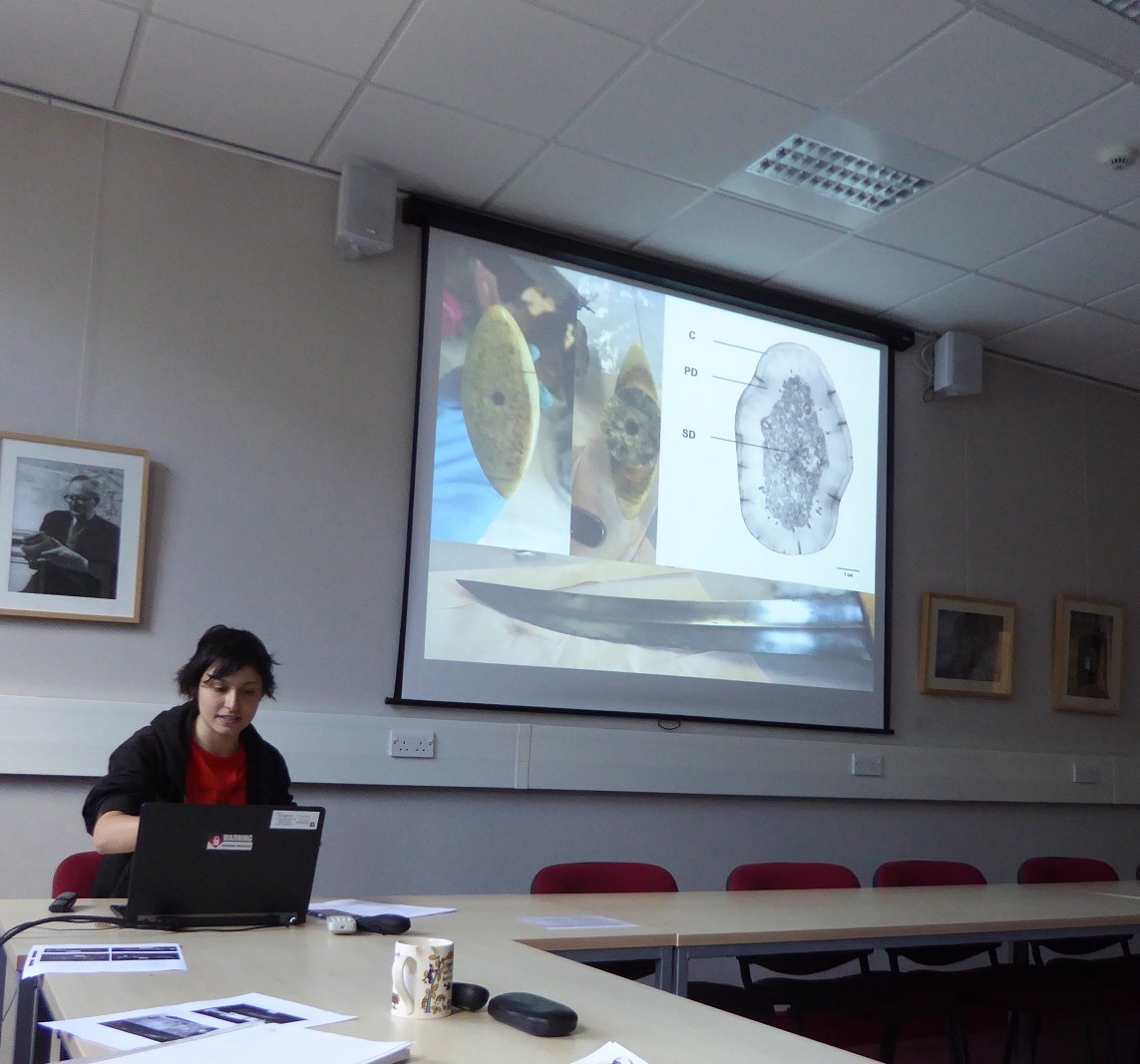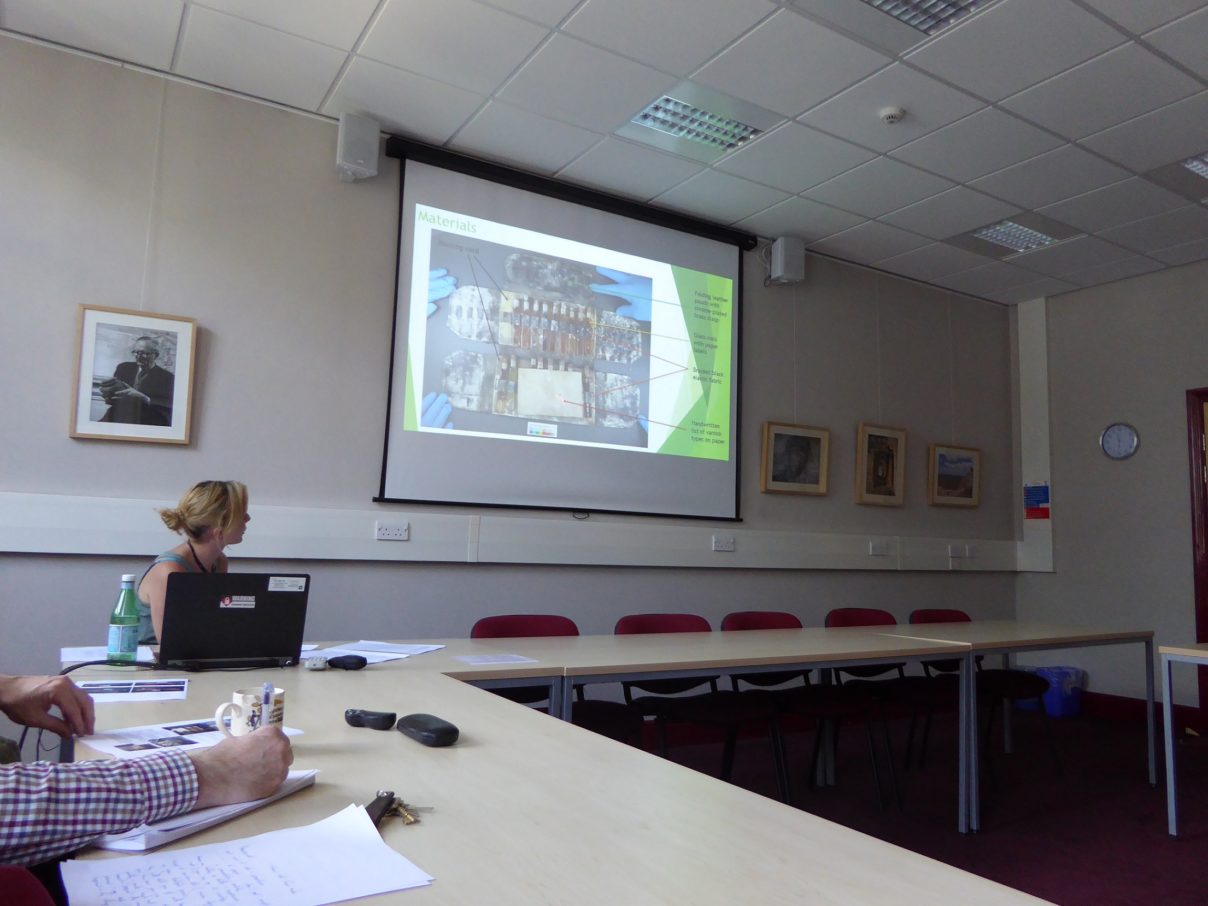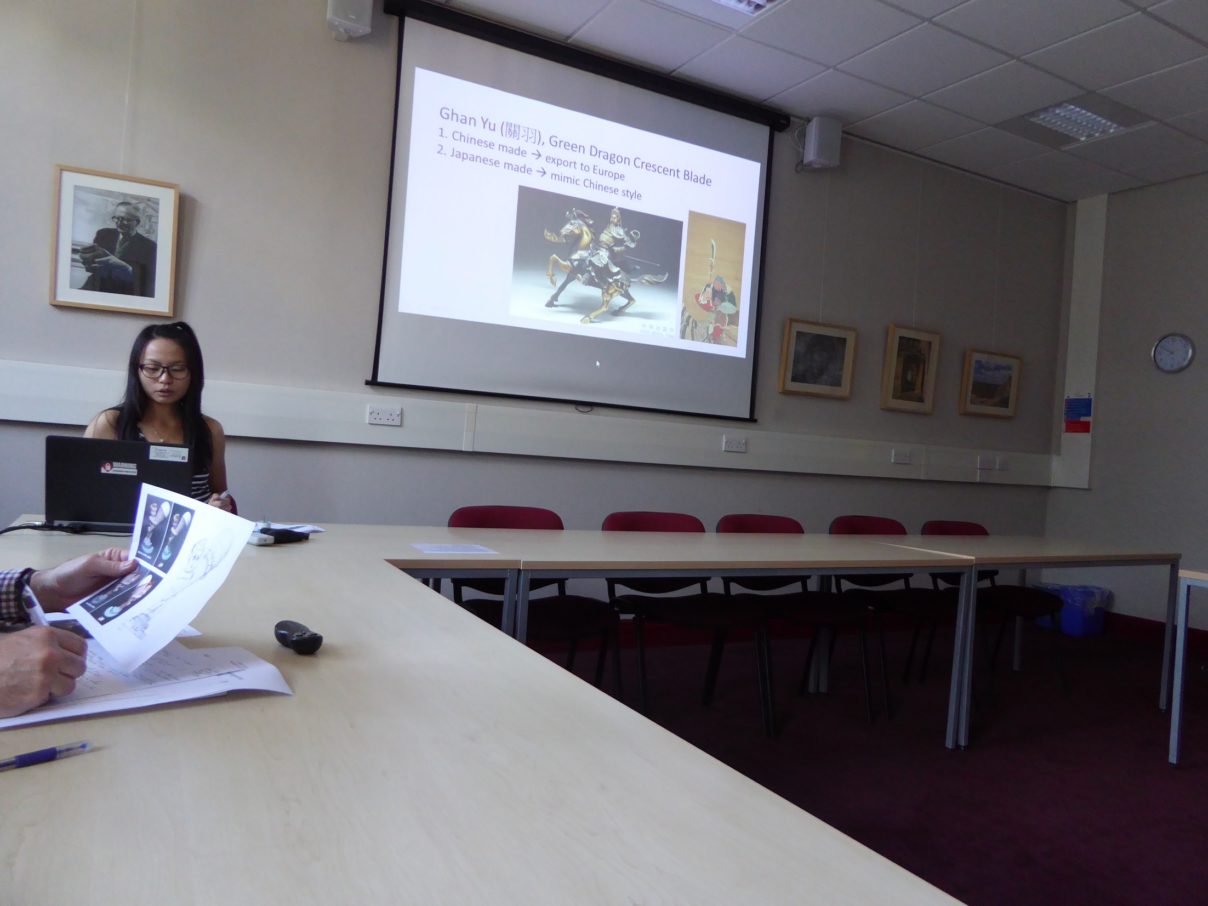Object Presentations

For anyone who will be starting our conservation masters course in October or for anyone thinking of applying in the future, here’s a little information regarding one of the activities the students get up to over the summer.
As mentioned in previous posts, the students receive a minimum of four objects over the summer to work on. Approximately halfway through the eleven week Conservation Practice module, the first year students give a presentation on one of their objects and during the final week, they present on a second object.
The first presentation often focuses on the nature of the object, which includes the materials it’s made from, how it was manufactured, when it was made and why it was important/significant in society and culture.

For example the leather pouch with glass vials that Bethan presented on appears to have been made using vegetable tanned fish skin and the vials appear to contain various types of varnish. The pouch was likely sent to prospective clients in order for them to see the types of varnish they produced in the hopes of gaining new customers.
The second presentations tend to focus on the conservation problems faced and the treatments implemented, however the students also briefly discuss the cultural and social background of their objects. The current students presented on their objects a couple of days ago and it’s always interesting to see what they choose. Often these objects end up being in their final portfolio and since we provide two complex and two slightly simpler objects at the start of the summer, it’s always interesting to see which objects they actually choose for their portfolio write up.

Rhian chose to present on two ice cream figurines that had posed a number of conservation issues and concerns, the first of which was whether they contained asbestos. The figurines date to between the 1920’s and 1950’s, which meant there was a good chance asbestos was included in their manufacture but thankfully Rhian identified the textile substance as likely to be cotton. There were also a number of cleaning issues with the figurines since they were made using plaster and had been painted and certain solvents are known to dissolve either plaster, pigment or both.

These presentations are usually fifteen minutes long; I say usually because they often run over due to the enthusiasm of the presenting student, with five minutes for questions. Although the conservation treatments of the objects are followed throughout the eleven weeks it’s great to see what other research has been done with regards to the objects. Understanding the significance is vitally important to realising why conserving these objects is important and sometimes it’s just exciting to see what the students have uncovered and found out.
There will be a couple of posts over the coming weeks that will look a little closer at the objects that have been worked on over the summer as well as a post detailing the group project the students took part in at Durham Castle!
